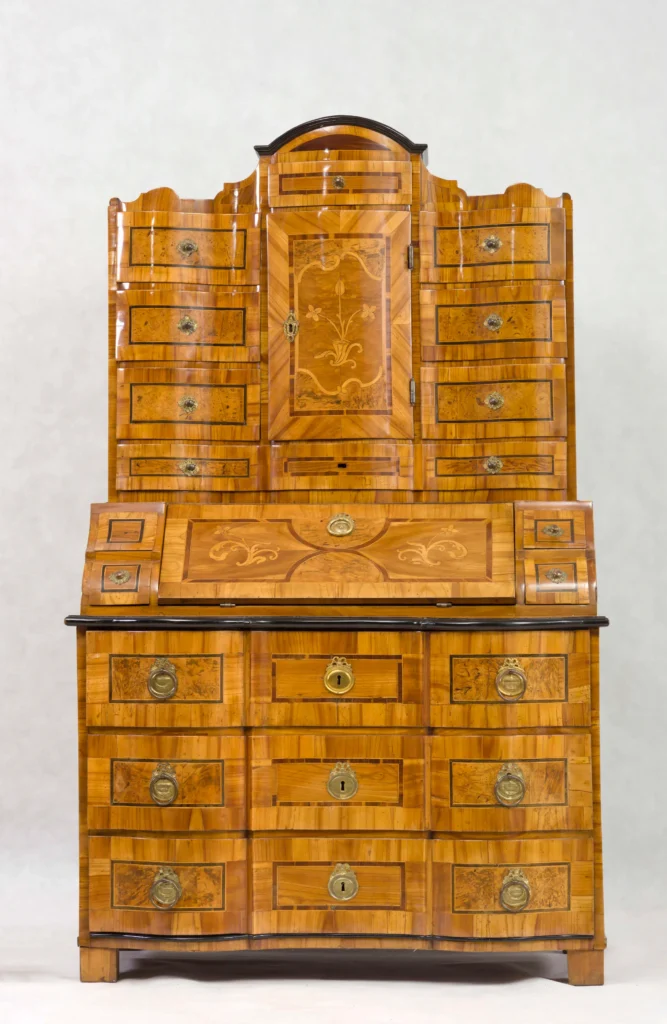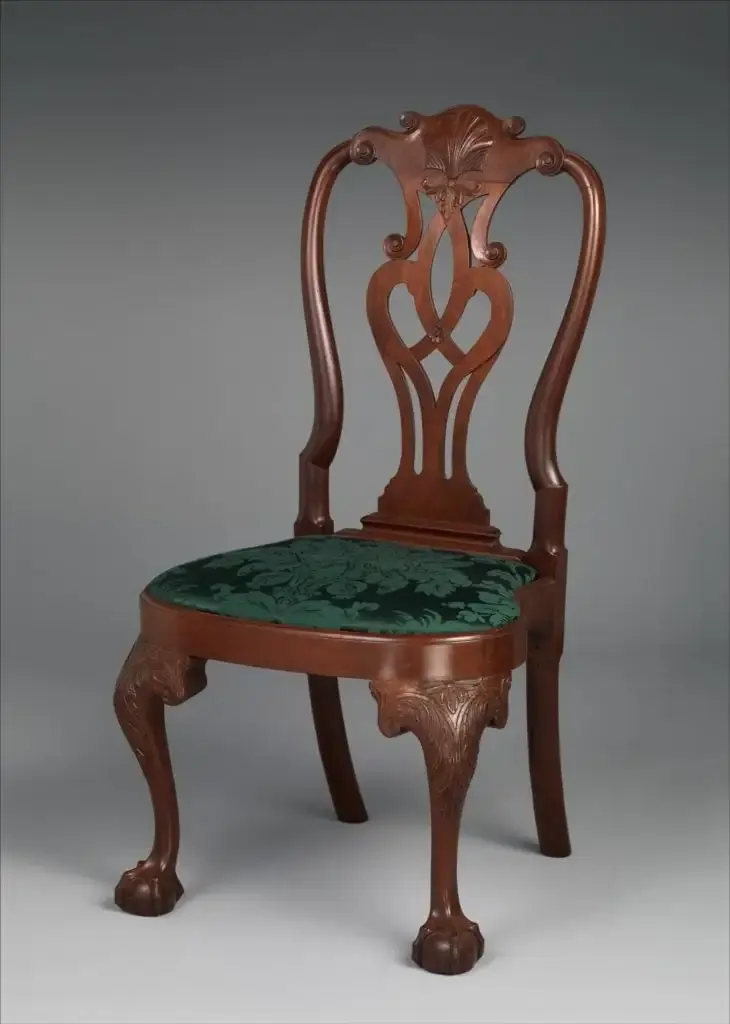The Japanese Tansu stand out as an advancement, in the realm of Japanese furniture design that traces its roots back hundreds of years ago. These built storage chests held roles in Japanese homes by marrying practical functionality with aesthetic appeal through a fusion of superior woodworking skills and refined architectural details. The unique characteristics of Japanese Tansu mirror the beliefs and everyday experiences of individuals belonging to various societal strata in Japan.
The history of these furniture items dates back, to different eras in the past. Originating in the Edo period and evolving further in the Meiji eras time frame. The distinctive features of each tansu reflect a narrative influenced by how they were built and the materials used for their creation as their intended purpose. Whether for storage on ships or in merchant homes or crafted specifically for tea ceremonies. This piece delves into the evolution and craftsmanship, behind these Japanese cabinetry pieces.
Table of Contents
ToggleOrigins and Evolution of Japanese Tansu
In 673 AD, at the Todai-ji temple, in Shoso-in storehouse lies a preserved Japanese storage cabinet called Zushi that showcases advanced woodworking methods impacting the evolution of Tansu furniture.
Early examples of joinery cabinets
Centuries ago when metal fasteners were not commonly used yet in construction work artisans, in Japan honed their skills in wood joinery to create structures that relied on tension and friction to stay together. These age old building techniques were handed down from generation, to generation within guilds and families laying the groundwork for the crafting of tansu. The term “tansu” originated during the Genroku period (1688-1704) initially denoting storage purposes for food and firewood.
Development during the Edo period (1603-1868)
In the Edo era of Japans history the making of tansu was deeply shaped by the country’s system. The rules set by the shogunate had an impact, on who could own types of furniture and how they were designed. Even wealthy merchants had to adhere to guidelines, on their choice of tansu. Some of the woods utilized for crafting these pieces were;
- Keyaki (Zelkova serrata)
- Kuri (Japanese chestnut)
- Sugi (Cryptomeria)
- Hinoki (Cypress)
In 1657, during the Meireki fire in Edo city is when a notable incident influenced the evolution of tansu with the introduction of cabinets, like the Nagamochi Kuruma, wheeled chests utilized for evacuations.
Changes in the Meiji period (1868-1912)
The Meiji Restoration signaled a shift, in the development of tansu with the end of the system enabling more creative design choices and varied styles across different regions. Local artisans during this era started blending features into their work while upholding woodworking methods leading to a rise in unique regional designs and a boost in production, by individual craftsmen.
The destructive earthquake and fire that struck Tokyo and Yokohama in 1923 had an impact, on the production of tansu (chest of drawers). This tragic event triggered the adoption of mass production techniques in the Kansai region. Signaled a shift from artisanal skills to factory made furniture pieces. Amidst these changes in manufacturing processes emerged an influence of furniture designs in Japan, during that era; however tansu continued to uphold their features and cultural importance amidst evolving trends.
Types and Functions of Tansu
In the era of Edo, social status decided which tansu you could have and use. The variations, among classes were evident, in the materials used. The styles incorporated in these storage chests.
Class-determined tansu of the Edo period
The samurai class had katana-dansu (sword storage chests) that was crafted with yet elegant designs adorned with decorative metalwork details. They sometimes kept these items in their homes of the usual storage warehouse for both ceremonial reasons. Merchants used choba-dansu for storing account books and business supplies; these chests were made of high quality face wood and hardware to make an impression, on customers.
Regional variations in the Meiji period
Following the abolition of the feudal system, regional styles flourished across Japan. Notable variations included:
- The sophisticated Kyoto style, known for its tama nuri lacquering technique
- Sendai’s distinctive clothing storage designs
- Sado Island’s renowned craftsmanship in chest construction
- Sakai’s merchant chests, reflecting its historical status as Osaka’s port town
Specialized tansu for different purposes
The diversity of tansu types demonstrates their integral role in Japanese society. Each type served specific functions:
- Kitchen Storage: Mizuya-dansuflourished in the Kansai region, particularly in Shiga and Kyoto prefectures, designed for storing tableware and food items. These pieces often symbolized wealth through their elaborate construction.
- Merchant Usage: Kuruma-dansu, equipped with wheels, represented the earliest documented mobile cabinetry. These pieces proved invaluable during emergencies, particularly fires, allowing quick evacuation of valuable items.
- Medicine Storage: Kusuri-dansu, crafted from lightweight materials like paulownia or cedar, served traveling medicine vendors. These pieces featured numerous small drawers for organizing herbs and medicines.
- Tea Ceremony: Cha-dansuincorporated unique design elements such as openwork sides and lattice shelves, emphasizing both storage and display functions. Unlike other tansu types that became rare, these pieces maintain their practical use in modern households.
The unique characteristics of these storage items expanded to designs such, as kaidan-dansu (staircase chests) which optimized space usage in townhouses by integrating storage, with practical stairs. These items showcase the solutions crafted by artisans to cater to precise storage requirements while upholding aesthetic charm.
Craftsmanship and Materials
The exquisite artisanship of tansu showcases generations of honed woodworking skills and intricate joinery methods using chosen materials – embodying the epitome of classic Japanese furniture crafting techniques.
Traditional woodworking techniques
Japanese artisans used sashimono techniques to craft furniture without relying on nails or screws by cutting mortises and grooves, in wooden boards to create over 1,000 unique assembly designs. These joints offered flexibility, for tansu mobility enabling the wood to withstand movement pressures while maintaining strength.
Primary and secondary woods used
Tansuya (tansu craftsmen) maintained a strict distinction between primary and secondary woods:
Primary Woods (for exposed surfaces):
- Keyaki (Japanese elm) – doors and drawer fronts
- Kuri (Japanese chestnut) – structural elements
- Hinoki (cypress) – premium surfaces
- Kiri (paulownia) – lightweight applications
The internal structure and exposed parts were crafted using woods like Japanese cedar and paulownia wood to meet both functional needs and aesthetic preferences. Opting for tougher woods, in high wear spots and softer ones, for internal use.
Hardware and finishing methods
The development of metal hardware had an impact, on the design of tansu over time. Craftsmen up, to the 1880’s relied on hand forged iron parts for their creations. However the arrival of iron plate pressing technology transformed the way hardware was made allowing for intricate and varied designs while still ensuring durability and strength.
Traditional finishing methods encompassed two primary approaches:
- Dry Finish: Craftsmen rubbed clay or chalk powder into soft wood surfaces, then burnished them using Eulalia root whisks, creating a smooth, natural appearance.
- Lacquer Application: Urushi lacquer served either as a transparent sealant to enhance natural grain patterns or as an opaque coating for complete surface coverage.
Metal hardware pieces had roles – they were not just functional. Also added a touch of decoration to the furniture pieces they adorned. The Herikanagu (edge hardware), for instance strengthened corners, while the obikanagu (sash hardware) supported cabinet fronts. Specific elements like mochiokuri (carry handles). Sao-toshi (pole holding loops) made it easier to move these storage units showing that mobility was a key consideration, in their design.
The way the hardware was positioned showed incredible accuracy. Metal supports were carefully placed at stress points to guarantee durability while being transported effectively this hand on design approach showcased the value of blending practicality with aesthetic charm which led to furniture that stayed both elegant and functional for many years.
Conclusion
The traditional Japanese Tansu showcases the culmination of centuries of expert woodworking skills and craftsmanship that capture the essence of traditions, with its elegant and intricate design philosophy. It serves as a record of the progression of society. From the rigid class structure of the Edo era to the diverse artistic interpretations of the Meiji period. The evolution of these storage pieces mirrors significant societal shifts while upholding values such, as artistry and meaningful aesthetics at their core.
The enduring impact of tansu craftsmanship, on furniture design is evident in the timeless principles of material selection and joinery techniques that continue to inspire modern aesthetics and functionality aspects of furniture making today. Each existing tansu piece acts as a record and a remarkable artistic creation that showcases the skill and creativity of craftsmen who turned basic storage solutions into long lasting functional art pieces. These exquisite creations serve as a testament to the fact that true craftsmanship goes beyond practicality; it results in items that gain significance and worth over time, with each generation.
FAQs
- What is the meaning of ‘tansu’ in Japanese?
Tansu refers to traditional Japanese mobile storage cabinets, primarily used for storing clothing, including kimonos. - Can you describe the different types of tansu?
Some of the most popular types of tansu include:
- Kaidan Tansu: Also known as a step chest, this tansu is designed like a staircase, featuring a variety of drawers and cabinets of different sizes.
- Choba Tansu: Typically used in merchant settings.
- Isho Tansu: Used for storing clothes.
- Mizuya Tansu: Used in kitchen spaces for storing utensils and food items.
3. What distinguishes tansu from dansu?
The term ‘tansu’ was historically used during the Edo Period (1603-1868) to refer to cabinets designed for specific items like account books, medicinal herbs, and swords. When combined with another word, ‘tansu’ becomes ‘dansu’. For example, ‘Cha-dansu’ refers to small chests used for storing tea ingredients and utensils.
4. What is a Japanese step tansu?
A Japanese step tansu, which gained popularity in the early Edo period around the 1600s, is a multi-functional furniture piece designed to save space. It serves as a storage solution for blankets and large household items while also providing access to the loft above, integrating seamlessly with the architecture of traditional Japanese homes.



